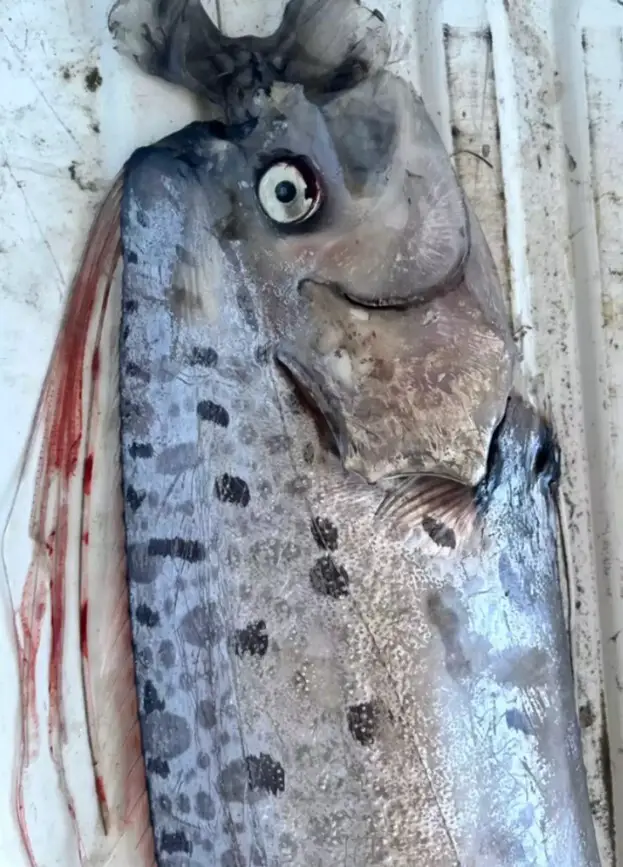A 12-foot oarfish, often referred to as the “Doomsday fish” or “Harbinger of doom,” was discovered off the coast of San Diego’s La Jolla Cove just two days before a 4.6 magnitude earthquake struck Los Angeles. The deep-sea creature, known for its long, ribbon-like body and its rare appearances, is often associated with superstitions that link its sightings to impending natural disasters. Oarfish usually reside 3,000 feet below the ocean surface, making their appearances in shallow waters particularly ominous.
The discovery of the dead oarfish by kayakers and snorkelers initially did not raise much concern, but the subsequent earthquake has fueled superstitions. Although the quake caused buildings to shake and set off car alarms, it resulted in no significant damage or injuries. The Scripps Institution of Oceanography is currently investigating the cause of the oarfish’s death and its unusual appearance in shallow waters.

This isn’t the first time an oarfish has been linked to a natural disaster. Earlier in 2024, a 12.5-foot oarfish washed up on a beach in the Philippines, and in 2022, a 16-foot oarfish was found in Japan just days before a major typhoon required the evacuation of nine million people. The rare sightings of these deep-sea creatures continue to intrigue scientists and the public alike, as their elusive nature and the superstitions surrounding them contribute to their eerie reputation.
While the scientific community remains cautious about linking oarfish sightings to earthquakes, the timing of such events continues to stoke fears and curiosity. The rarity of these sightings in California—only 20 since 1901—adds to the mystique of the “Doomsday fish,” with many wondering if there is any truth to the legends that surround them.




